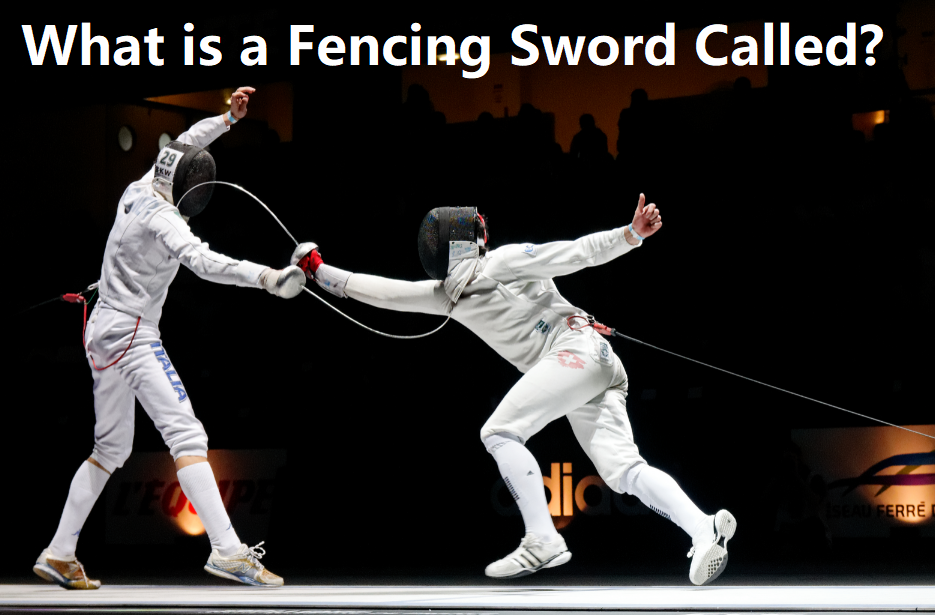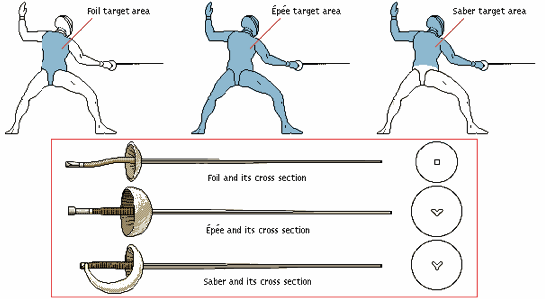What is a Fencing Sword Called? Since the first modern Olympic Games were held in 1896, fencing has been a regular fixture at the Olympic Games. Sword fighting requires speed, anticipation, reflexes, and a great deal of mental strength.
The activity originated in Europe, but China and the United States have enjoyed success at recent Games. Ruben Limardo won the second Olympic gold medal in Venezuela’s history in London in 2012.
Table of Contents
What is fencing?
Evidence of sword fights goes back as far as Ancient Egypt in 1190 BC with bouts and duels continuing until the 18th century. The sport of fencing originated as a form of military training, and it became a sport in both Germany and Italy in the 14th and 15th centuries. German fencing masters organized the first guilds, the most notable being the Marxbrueder of Frankfurt in 1478.
The sport’s popularity increased in the 17th and 18th centuries due to the invention of a weapon with a flattened tip known as the foil, a set of rules governing the target area, and a wire-mesh mask. Domenico Angelo is considered one of the pioneers of fencing as a sport. In the second half of the 18th century, he taught swordsmanship to aristocratic Britons at his academy in Soho, London.
In his book ‘L’Ecole des Armes (‘The School of Fencing’), Angelo laid down the fundamentals of posture and footwork that continue to this day. The sport also grew in popularity in France, with Camille Prevost assembling the first basic conventions. However, London hosted the first formal fencing competition at the inaugural Grand Military Tournament and Assault at Arms in 1880.
The Amateur Gymnastic and Fencing Association (now British Gymnastics) drew up official regulations in 1896, the same year as the sport appeared at the first modern Olympic Games in Athens.

The Equipment
As well as the swords, there is a fair amount of equipment a fencer requires. Most of this is with safety in mind. This is an area that required urgent attention after the death of Moscow 1980 foil gold medallist Vladimir Smirnov at the 1982 World Championships. Matthias Behr’s broken blade pierced the Russian’s brain through his mask.
Since that tragic accident, masks and the neck bibs surrounding them are subject to stringent checks. All masks must pass a 12kg “punch test” with FIE-approved versions, obligatory for World Championships and Olympic Games, made of stainless steel, and non-FIE masks usually made of carbon steel mesh.
Masks normally have a removable inside lining for easy washing. The neck bibs are usually made of Kevlar or other strong synthetic fibre and made to resist a force of 1600 Newtons.A German fencing mask with neck bib awaiting use in the foil event at the 2015 European Games in BakuKevlar combined with tough cotton or nylon is used for most of the rest of the equipment although this is only required to withstand 800 Newtons.
This consists of a jacket, an under-layer stretching halfway down the sword arm known as a plastron, a glove for the sword hand, breeches or short trousers which stop just before the knee, and socks. Also worn under the jacket are plastic chest protectors which are mandatory for women with some men choosing to use them.
Footwear can take the form of generic sports shoes with thinner soles and rounded profiles as used in racket sports or handball. The final pieces of equipment enable hits to be registered automatically: the lamé, an electrically conductive garment worn over the scoring area for each fencing sword type, and the body cord which connects to the weapon.

The Weapons: What is a Fencing Sword Called?
There are three fencing blades used in Olympic fencing – the foil, épée, and sabre – each of which has different compositions, techniques, and scoring target areas.
The foil has a maximum weight of 500 grams and is a thrusting weapon. With the lamé covering the torso, only the tip of the blade counts as the target area.
The épée is also a thrusting weapon but has a maximum weight of 775 grams. Again, only the tip of the blade counts but the target area is the entire body so there is no lamé.
The sabre is a cutting and thrusting weapon with a maximum weight of 500 grams. As long as the target area is the upper half of the body, covered by the lamé, including the face mask and neck bib which must also be made of conducting material, then the blade can be used.
The Scoring
With hits incredibly difficult to judge via the naked eye, electrical scoring apparatus was introduced in 1933 first to the épée. Then came the Sabre in 1988, and it followed suit in 1956. It works when the blade (only the tip for foil and sabre) makes contact with the target area, completing an electric circuit and triggering a red or green light depending on which athlete lands.
Quick footwork and balance are essential for a fencer in both attack and defense. All three disciplines take place on a piste that is 14m long and 1.5m-2m wide. Retreating off the end of the piste results in a point to the opponent.
The first to 15 points wins with the action taking place in three three-minute periods broken up by one-minute intervals. The clock stops between each ‘phrase’ with the two fencers resetting to the ‘en garde’ position.
Foil Fencing
Though it was not part of the 1908 London Olympics, the foil is perhaps the most familiar of the three disciplines. In this game, only the torso counts, and points are awarded based on the ‘right of way’ system.
A fencer must land on the scoring area with the point of the blade after initiating an attack – as determined by the referee. The forward lunge is the most common form of attack even though it can be parried by the fencer on the back foot, then launched as a riposte.
Fencing also includes the ‘beat attack’, where one fencer beats the opponent’s blade to gain the right of way. A hit with the point of the blade landing away from the target area with the right of way results at the end of the phrase with no score. This is even if the opponent lands on target afterward.
The lightness of the foil also permits a flick attack, in which the blade is bent over a parry almost as if it were thrown. However, depressing the point for long enough to register the hit makes this more difficult.
Rio Loves Fencing – How to Fence (Foil)
Épée fencing
Similar to the foil, the épée is a point weapon, but it is significantly heavier, making flick attacks impossible. The two main differences are that the whole body, including the hand, is a scoring area, with no ‘right of way’ in operation.
Therefore, both players can score for simultaneous hits, although a ‘double touch’ with the score tied at 14-14 is null and void. There is no such thing as an off-target hit so a phrase will continue until there is a score unless a tip of a blade hits the floor.
It is a quick one-two of striking the opponent’s blade followed by aiming for his/her arm, with counterattacks to the hand or arm more common as there is no right of way.
Rio Loves Fencing – How to Fence (Sabre)
Sabre fencing
The sabre is the only fencing sword where both the body and tip score. It is lightweight enabling the use of the flick attack and, also like the foil, the ‘right of way’ system is in force.
Sabres and foils differ in that off-target hits do not stop the action, which continues until a point is scored. So if the fencer with the right of way lands off-target, his/her opponent can then win the point by landing on-target.
If both fencers land on target, as with the foil, the referee awards the point to whoever has the right of way rather than who lands first.
